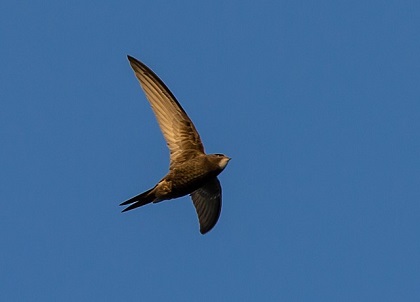Act!
Inspiration · ResourcesSwift as the wind
SIGNATURES NEEDED NOW TO HELP RED-LISTED BIRDS

As I write, the first house-martins and swallows have arrived in the skies where I live but their sightings are bitter-sweet. I know the ones near me will have flown thousands of miles to nest in the barns where they were born, to find they've been torn down and the area is an ugly, unsuitable for nesting, building site.
Swifts are no different, also known for 'site-fidelity', they are some of our last summer migrants to arrive in the UK and some of the first to leave - but they have declined by over 50% in the UK. Other issues they face is that their nesting sites are being inadvertently blocked off by insulation and house improvement measures. There is currently a petition calling for swift bricks to be required in all new housing, to provide homes, not just for them, but also for house martins, starlings and house sparrows who also use these ready- made nests.
Launched by nature author and conservationist, Hannah Bourne-Taylor, on Saturday 5th November 2022 , at Speaker's Corner, Hyde Park in London (she was unclothed, and painted in feathers), the petition, now as I write, in early April 2023, has reached just over 80,000 but it needs to be signed by 100,000 people by the end of April 2023 in order for it to be considered for a debate in Parliament.
Hannah says, "Loss of nest sites of swifts are a particular concern because swifts are site loyal, adults returning to the exact nesting site year on year for their 20-year lifetimes. With one of the shortest breeding seasons of any bird, the individual pairs returning to find their nests blocked off, risk being unable to find a new cavity to nest and breed in, thus contributing to the population decline of over 50% in the past 20 years (BTO). Many individuals fatally break their wings trying to get back into their nesting sites, after 9 months on the wing."
"Time is of the essence and my biggest concern is that these birds are not being considered despite being our closest wild neighbours, almost entirely dependent on having access to our walls to breed in (swifts used to nest in tall trees in forests - some colonies still remain in the primal forests of Europe but we cut the trees down here, and remarkably these birds, from one of the most ancient orders of birds dating back 70 million years, adapted to our walls.)."
Please sign the petition HERE.
If you're still looking for more of an incentive to sign, then read the below from the RSPB as to why they think swifts are amazing, and below that you can watch an animation created by The Why Agency, for the campaign about these extraordinary birds and hear Hannah herself with her top tips:
- After leaving the nest where they hatched, they'll keep flying non-stop for three years!
- They even eat, mate and sleep in the air - they can 'snooze' with one side of their brain at once, and then switch to the other side.
- Some of 'our' swifts migrate as far as South Africa for winter.
- Parent swifts gather insect snacks for their chicks, carrying as many as 1,000 at once.
- Swifts nest in houses, churches, old factories and many other types of building - they squeeze through small gaps to nest in cavities inside roofs and walls.
- At dusk, groups of swifts fly at high speeds around the areas where they are nesting, screaming.